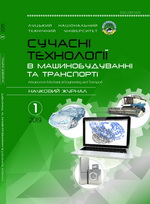Influence of links flexibility on efficiency of mechanisms and machines
Abstract
The paper proposes a new method for assessing the influence of link flexibility on the efficiency of mechanisms and machines. It has been established that the compliance of the elements of mechanisms and machines should be taken into account when assessing the internal energy loss and determining the efficiency. Analytical expressions are obtained that allow one to estimate the effect of reduced stiffnesses, moments of inertia, and friction forces on the internal energy loss in the mechanism. The relationship between the deformation of the links and the efficiency of the mechanisms and machines is determined. A new indicator has been proposed (elastic efficiency), which allows to calculate the cyclic and instantaneous efficiency of mechanisms and machines with ductile links, taking into account losses in displacement and speed due to the elastic deformation of the links.
Keywords: mechanism, non-uniform mode of movement, elastic deformation of links, energy loss, estimation of efficiency.




